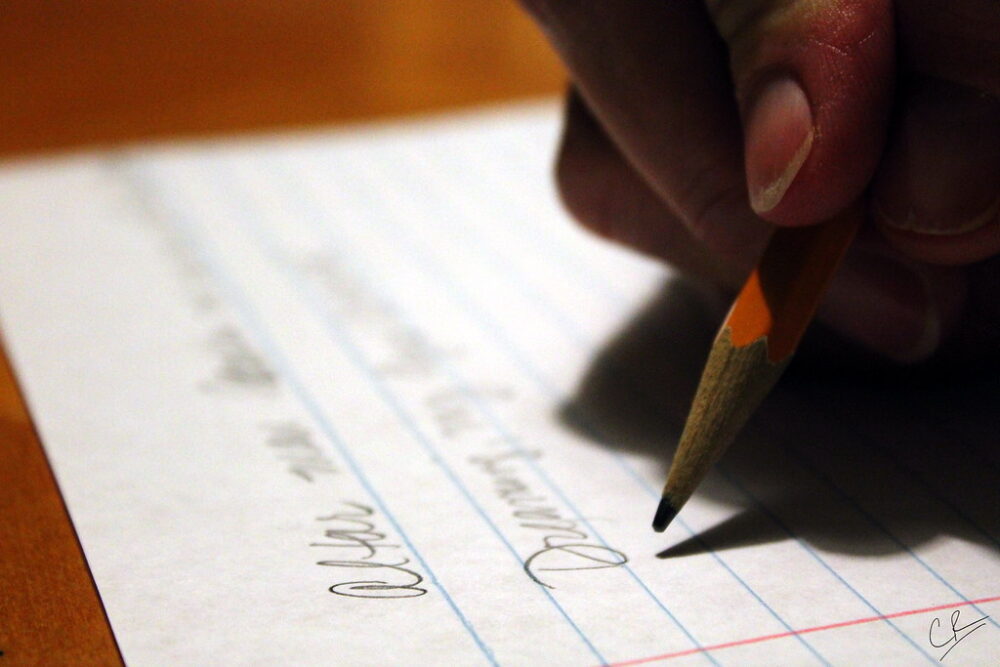The earliest example of physical writing is widely considered to be Cuneiform, a system of wedge-shaped inscriptions dating back to 3000 BCE. Attributed to the Sumerians of ancient Mesopotamia, the informal system was utilized namely for communication and maintaining transactional records. Although this physical remnant of Sumer offers invaluable insight into ancient civilization, most anthropologists do not consider Cuneiform to be true “writing.” It conveys basal-level information without any dependence upon an actual language. However, like many other quintessential modern cultural practices, it was during the reign of the Roman empire that writing became what we know it to be today — that is, an essential tool for academic pursuits, storytelling, recordkeeping, and communication in greater depth.
As writing has flourished across human history, technology has kept an equal, if not greater, pace. Tools such as the printing press, typewriter, word processor, and ultimately the keyboard have all entered into existence seeking to improve efficiency and ease. But it appears as though the slow and gradual transition to digital technology has now eclipsed handwriting in terms of both value and usefulness. What began as an exciting prospect for its potential to propagate knowledge and communication has blindsided us in its rise to utility, now more reminiscent of a crutch, or perhaps even a prosthetic limb: something essential to our ability to engage in many aspects of our daily lives — something without which, we’d be practically incapacitated.
“In an age where the technology was limited to a chisel and stone, handwriting is uniquely essential to human history.”
In the broadest possible lens, handwriting is perhaps most highly significant to humankind for its cultural contributions. Not only does written language both retain and expand the depth of many cultures, but it also allows for a greater cross-cultural connection. It bridges the gap between individual cultures and the rest of the world. Consider, for example, the Rosetta Stone, inscribed with the same decree in two Egyptian scripts and one Greek script. This first multilingual text allowed for a previously untranslated Egyptian hieroglyphic system to finally be deciphered. The outcome? An entirely new understanding of ancient Egyptian civilization and communication.
Handwriting and the disciplines of history and anthropology are ultimately inherently intertwined. Firsthand accounts such as written letters, diaries, books, and ledgers are uniquely essential to our current understanding of human history. This is because, in an age where the technology to produce such accounts was limited to a chisel and stone or quill and ink, handwriting was the only way to ensure that information endured across time. The Mandarin system epitomizes this, having endured 3,000 years as a highly-practiced written language and serving as an essential element of Chinese art, literature, and cultural retention since its inception.
Additional vouchers for the significance of handwriting are the other, more interpersonal aspects of the practice. Communication in a handwritten format is a meaningful, effortful manner of interaction, especially as opposed to the alternative. Handwritten letters, cards, and notes all indicate a level of thoughtfulness not transferable to typing, simply because of the time and careful consideration it takes to produce a birthday card signed with your name in ink.
“What began as an exciting prospect for its potential to propagate knowledge and communication has blindsided us in its rise to utility, now more reminiscent of a crutch, or perhaps even a prosthetic limb.”
It is imperative that handwriting does not become yet another obsolete cultural practice, sparking intrigue only within inquisitive anthropologists and museum curators of niche interest. But in a digital age prioritizing rapid information intake, mass data production and storage, and ultimately, efficiency, how can we preserve this lapsing bit of humanity?
I have some suggestions. Write a letter, be it to your friend at camp or your family at home. Make a physical to-do list, which is not only something you likely do anyway, but you might find it helps organize your thoughts. Keep a wellness journal, a field journal, any journal documenting your unique human experience. Take your lecture notes by hand, or, if you prefer, perform a review and active recall by writing down information. Write silly notes to your roommates, words of affirmation to yourself, or messages you stick on your apartment door for other residents to cherish. Take up calligraphy or practice the cursive they tried to teach you in the third grade but never quite completed. Most importantly, just keep writing. You don’t need to be a historian or a proponent of the Mandarin script for your writing to be meaningful — you may even just be grateful for the physical memories you’ve left yourself in many years’ time.
- The World’s Writing Systems (1996). ISBN 9780195079937
- Journal of Forensic Sciences & Criminal Investigation (2017). DOI: 10.19080/JFSCI.2017.03.555605






